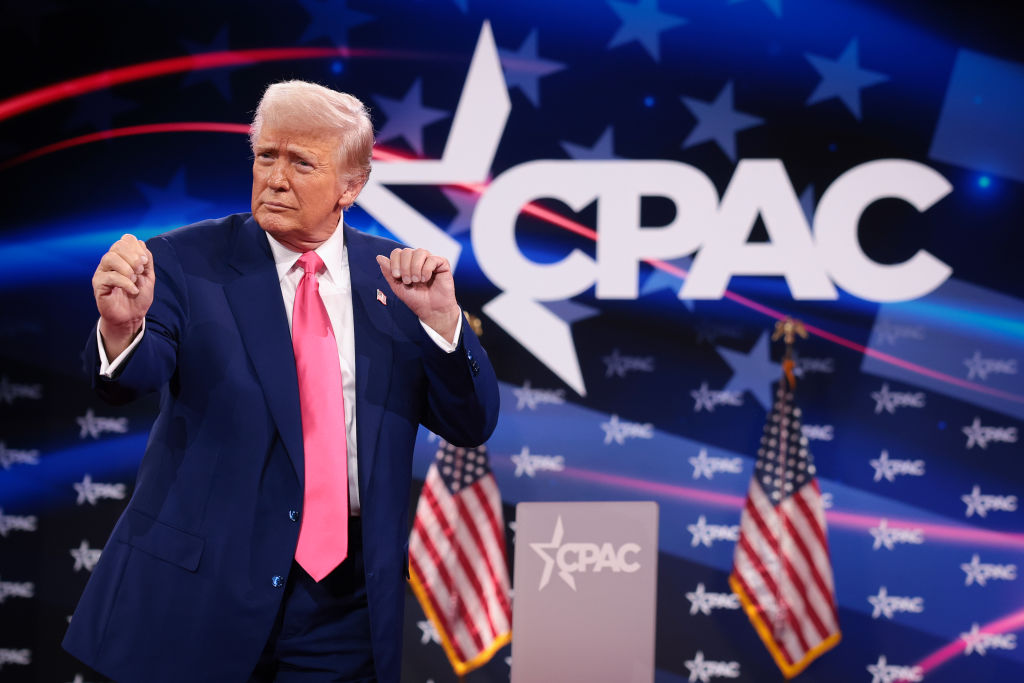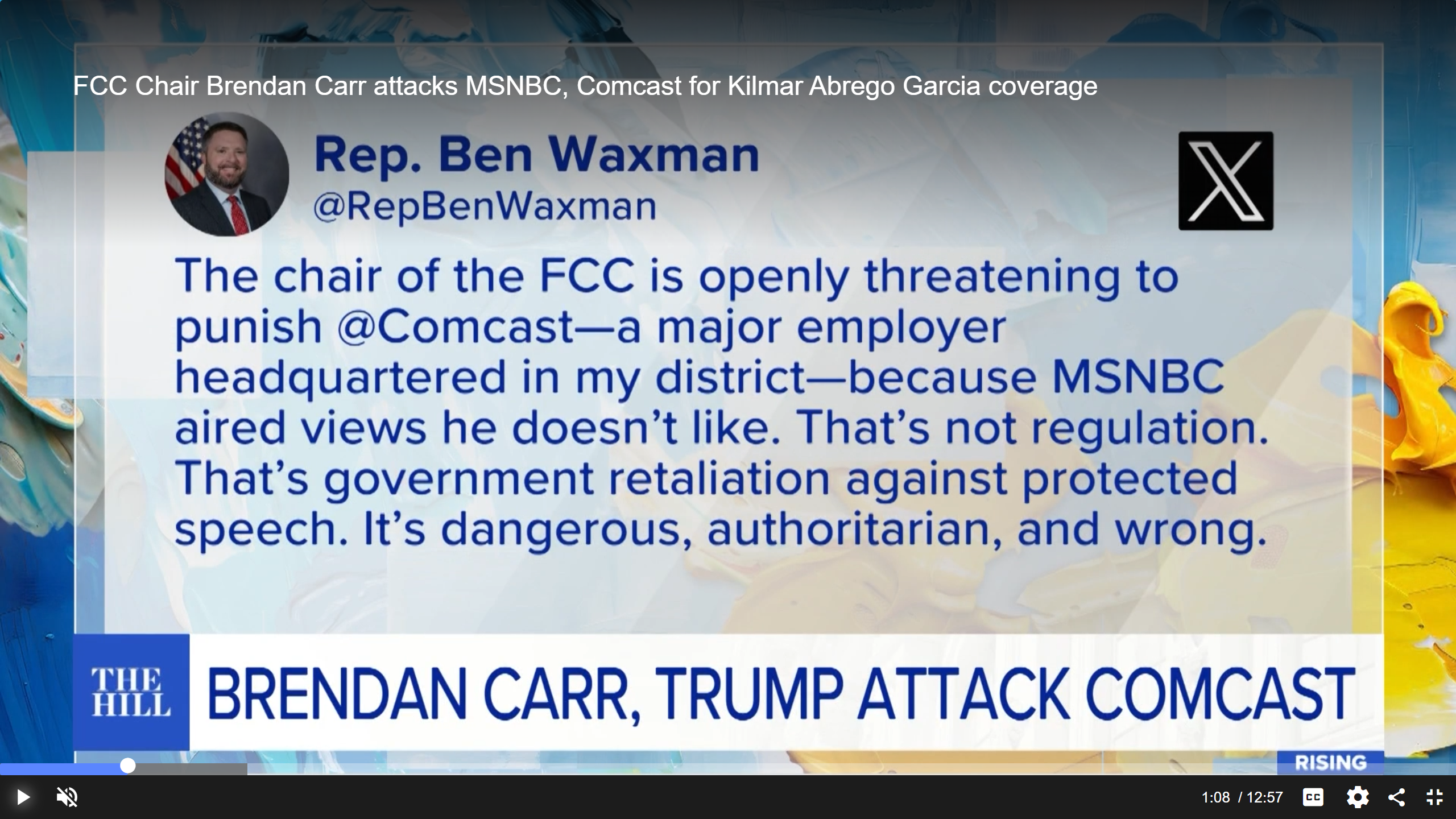Trump Oversight Order May Portend Bigger Changes
“This executive order marks a significant departure from the status quo”

What does President Trump’s executive order giving the White House oversight of the FCC and other independent agencies mean for the world of broadcast? We asked several legal observers.
Their consensus is that the executive order was principally issued to set up a court case challenging the Supreme Court’s Humphrey’s Executor doctrine, which restricts a president’s ability to remove commissioners from independent agencies.
According to the Associated Press, the 1935 Supreme Court ruling established that presidents cannot fire appointed leaders of various federal agencies without cause. But conservative legal experts have argued that all such agencies in the executive branch answer to the president and that he should be able to fire their leaders at will, according to the AP.
“It’s pretty clear that the executive order violates [the Humphrey’s] doctrine,” said Scott Flick, partner with Pillsbury Winthrop Shaw Pittman LLP. “But the administration is trying to get the Supreme Court to overrule that 90-year-old decision, and this executive order creates a test case to accomplish that.
“If the Supreme Court ultimately overrules [the doctrine] and commissioners at independent agencies are effectively made at-will employees, then the White House would be able to wield tremendous power over these agencies by simply threatening to remove any commissioner who doesn’t vote in line with the administration’s policies and priorities.”
“Overreach”?
As we noted in a recent piece published before Trump was inaugurated, FCC watchers have expected a “pro-deregulation” agenda and an end to the commission’s own Diversity, Equity and Inclusion programs (the latter of which came to pass immediately). And some predicted “fast and furious” changes in broader policy.
But the scope of many moves by the new administration has been breathtaking.
Get the TV Tech Newsletter
The professional video industry's #1 source for news, trends and product and tech information. Sign up below.
The much-discussed “Project 2025” initiative of the conservative Heritage Foundation appears to have turned into the playbook for the new White House, legal experts say. It features a section written by now-Chairman Brendan Carr on the future of the FCC.
“We should not be surprised,” said one person who watches the commission closely.
“This particular FCC chair is much more closely aligned with the current Trump administration policies and objectives than, say, Ajit Pai during the first Trump administration. I would not call (Carr) independent.”
According to a post by the law firm Akin Gump Strauss Hauer & Feld, the executive order, among other things, requires the heads of those agencies to consult more closely with the White House on policy objectives and binds agency employees to the president’s interpretation of the law.
The Akin lawyers wrote that independent agencies historically are insulated from presidential control — delegated authority and considered “creatures of Congress” when it comes to oversight. (The FCC’s own website describes it as “an independent U.S. government agency overseen by Congress.”)
“This EO marks a significant departure from the status quo,” Akin attorneys wrote in their post.
They noted that independent agencies typically are led by a commission or board of members — often with staggered terms and subject to statutory bipartisan membership requirements — who are nominated by the president and subject to Senate confirmation.
In the past, that structure, when paired with the president’s limited authority to remove members of the board or FCC for specific reasons, has insulated independent agencies from executive branch control.
Frank Montero, co-managing partner at Fletcher, Heald & Hildreth, said he is only mildly surprised by the scope of the administration’s undertakings with the executive order.
“But I’m getting used to being surprised, and frankly I think that is the objective,” he told Radio World in an email.
“I think that the M.O. of this administration is to flood the zone, overreach and grab for as much as possible unless told they can’t.”
Montero said he doesn’t expect the White House to be challenged by this Congress over the matter. “Any challenge will have to come from judicial appeals,” he said.
However, he continued, the executive order is not unprecedented. He said President Obama intervened in then-Chairman Tom Wheeler’s net neutrality deliberations.
“The White House has exercised influence over and intervened in FCC proceedings. So this is not entirely unprecedented, although perhaps the scope is. There are a few examples since the agency was first created.”
Montero considers the move a “power grab” since it involves other independent agencies, like the Securities and Exchange Commission and the Federal Trade Commission.
“However, when it comes specifically to the FCC, I think the (White House) focus may be specifically to reel in critical news outlets and perhaps liberal and foreign influence on media. The fact that … early FCC actions have been focused on Audacy-owned stations, public broadcasters and some of the major network news outlets that covered the election is not a coincidence,” Montero said. “I don’t think this president spends a lot of time contemplating net neutrality.”
One broadcast attorney told Radio World he believes the intent of the executive order is clear: “To exercise some control or intimidation over what media reports to the public.”
NAB President/CEO Curtis LeGeyt has been complimentary of Carr’s past comments about the role of local broadcasters and broadcast ownership restrictions and his criticisms of “Big Tech.” But LeGeyt also said last week that broadcasters must be allowed to report the news without the risk of government retribution. He also talked about the value of broadcast journalism in an age of social media misinformation.
What Next?
In the post noted earlier, the Akin attorneys wrote: “While some aspects of the EO may be comparatively uncontroversial — such as the requirement to consult with the White House on agency policies and priorities — others, such as the ability to restrict agency spending on matters the president deems inconsistent with his policies and priorities, will likely be subject to litigation and constitutional challenge.”
However, Seth Williams, a communications attorney with Fletcher, Heald & Hildreth, wonders if there has been an overreaction to the executive order. He said its impact, from a practical level, may not be that great.
“It has always been the case that presidents want someone in line with their policy preferences at the FCC. I think Chairman Carr was going to look to the White House for guidance on how to move forward on policy anyway. That’s how it works,” Williams said.
This article originally appeared on TV Tech sister brand Radio World.
Randy J. Stine has spent the past 40 years working in audio production and broadcast radio news. He joined Radio World in 1997 and covers new technology and regulatory issues. He has a B.A. in journalism from Michigan State University.
